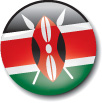Kenya
 Kenya and the U.S. signed a $12.7 million MCC Threshold Program agreement focused on reducing public sector corruption by overhauling the public procurement system, with a specific concentration on health care procurements throughout the supply chain. A new public financial management reform strategy, which includes a public procurement component, is being implemented by the Government of Kenya and supported by a coordinated group of donors to reduce opportunities for corruption. The Kenya Threshold Program supports Kenya’s broader reform efforts and complements other donor efforts.
Kenya and the U.S. signed a $12.7 million MCC Threshold Program agreement focused on reducing public sector corruption by overhauling the public procurement system, with a specific concentration on health care procurements throughout the supply chain. A new public financial management reform strategy, which includes a public procurement component, is being implemented by the Government of Kenya and supported by a coordinated group of donors to reduce opportunities for corruption. The Kenya Threshold Program supports Kenya’s broader reform efforts and complements other donor efforts.
Program Components
Reform the Public Procurement System: A 2005 “Independent Procurement Review,” conducted jointly by Kenya and the European Union, identified several critical problems with the current procurement system. Among the weaknesses identified were weak oversight institutions, a lack of transparency, poor linkages between procurements and expenditures, delays and inefficiencies and poor records management. The Kenya Threshold Program is designed to address each of these weaknesses through the following activities.
- Strengthen the capacity of the newly created Public Procurement Oversight Authority through enhanced technology, exchange programs, and staff training.
- Develop and roll out an e-procurement system in five key ministries — Office of the President, Education, Roads and Public Works, Energy and Health.
- Develop and implement new procurement regulations and guidelines.
- Institute proper records management protocols for public entities.
Improve Health Care Procurement and Delivery: The Government of Kenya has identified the Ministry of Health and its medical supplies procurement and delivery body, the Kenya Medical Supplies Agency (KEMSA), as being particularly susceptible to waste, fraud and abuse throughout the procurement and delivery process. Through the following activities, the program will also focus on strengthening transparency and accountability in the health sector to reduce opportunities for corruption.
- Strengthen KEMSA’s procurement capacity and accountability.
- Improve supply chain management of public health resources.
- Establish capacity within the Ministry of Health to monitor KEMSA’s procurement function and assess compliance.
- Strengthen the supervision of medical supplies delivered to rural health facilities.
Monitor and Evaluate the Kenya Threshold Program: The Kenya Threshold Program will use several monitoring and evaluation mechanisms, employed internally and externally, to assess its performance. These will include an emphasis on data gathering, the measurement of outcomes along with inputs, quality control, and sustainability.
Highlights of Expected Results:
- Improve transparency and accountability, and decrease corruption in the public sector. Baseline: 3 of 6 (2005). Target: 3.5 of 6 (2008). Source: World Bank Country Policy and Institutional Assessment.
- Reduce undocumented extra payments or bribes connected with the awarding of public contracts. Baseline: 3.7 (2006); Target: 4.3 (2008). Source: Global Competitiveness Report.
- Reduce the extent to which the health sector is affected by corruption. Baseline: 2.9 (2006). Target: 2.4 (2008). Source: Transparency International Global Corruption Barometer.
Implementing Partner: The United States Agency for International Development will oversee implementation of the Kenya Threshold Program on behalf of MCC.
Kenya was named eligible for MCC Threshold Program assistance on November 8, 2005.
